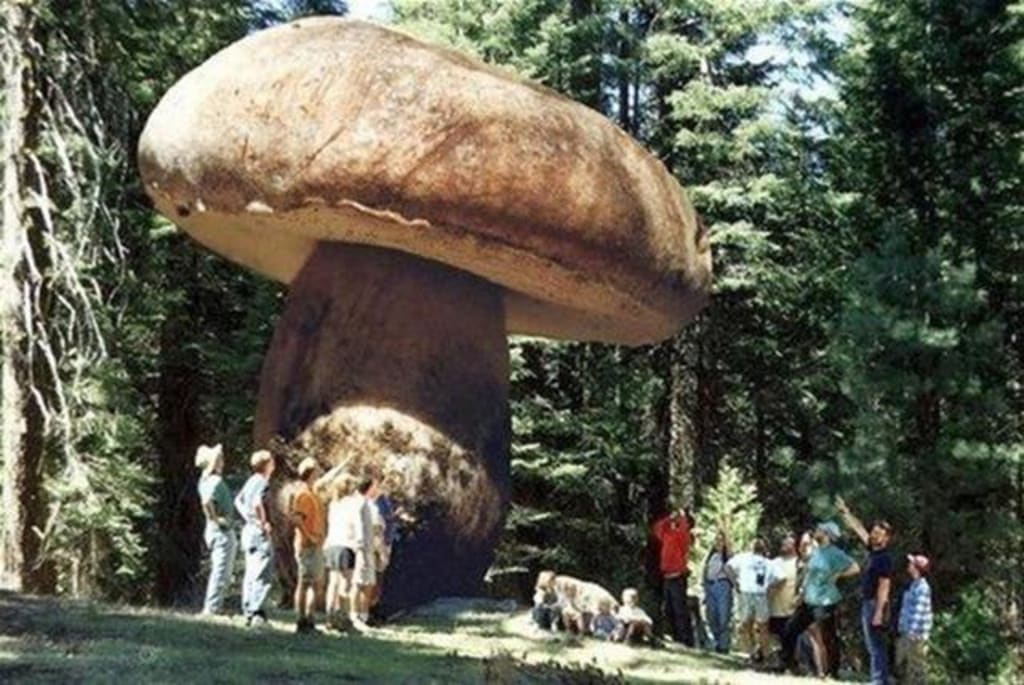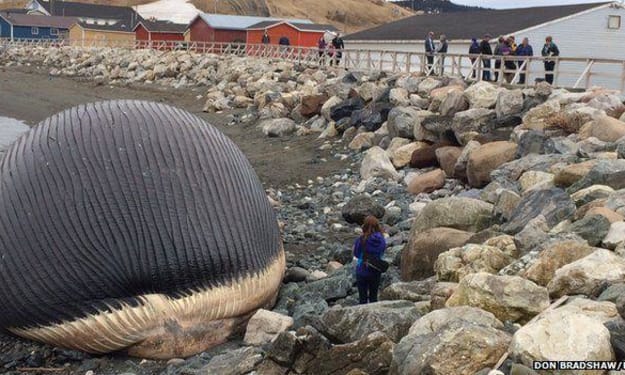Marine creatures generally have "deep sea gigantism"
The existence of super-giant creatures

We generally believe that the largest creature in the world is the blue whale.
Actually not, many creatures are bigger than blue whales!
The blue whale, considered the largest known animal in the world, can reach a length of 33 meters and a weight of 181 tons.
What do these data represent?
It is equivalent to the length of 3 buses, and the weight, based on the weight of an elephant of 5 tons, is about as heavy as 36 elephants, and humans are even more insignificant in front of blue whales. But the following two species are "bigger" than the blue whale:
1. Mysterious mushrooms more than 40 times heavier than blue whales
This mushroom is the fruiting body of Armillaria, also known as the honey mushroom.
The largest individual yet found, living in the Oregon National Forest, covers an area of about 10.36 square kilometers (15,540 acres), and its entire weight cannot be measured correctly because the fungus lives underground. Scientists estimate that the individual weighed more than 7,500 tons, and some even think it may have reached an incredible 35,000 tons.
Armillaria is like an underground "blood-sucking" net, with intertwined mycelium, which is born in the forest by sucking the nutrients of trees. It was discovered by humans because of the large golden mushrooms.
2. Jellyfish that are longer than a blue whale
Lion's mane jellyfish is the largest jellyfish in the world, with a diameter of up to 2 meters. Although it weighs only two or three hundred kilograms, its body length (even tentacles) can reach 37 meters.
And the longest title in the world does not belong to the lion's mane jellyfish. A tube jellyfish found off the coast of Western Australia in 2020 floats in the ocean in a ring like a streamer. The "ring" is estimated to be 47 meters long, and scientists believe its total length can reach 119 meters.
It can be seen that the blue whale is at most the largest vertebrate or the heaviest animal.
blue whale skull
Some people question whether the largest vertebrate in the world should be A. fragilis, not the blue whale. According to fossil estimates, the Fragile Amphisaurus was at least 10 meters tall, with an average weight of 180 tons and a length of up to 50 meters.
But the size of A. fragilis is based on guesswork and is therefore controversial.
Blue whales, on land, are indeed super-giant creatures, but in the ocean, which accounts for 70% of the earth, it does not feel abrupt. Is it possible that there are super creatures larger than blue whales in the ocean?
Before answering this question, let's understand why blue whales grow so big?
As we all know, the individual animal is not as big as you want to grow up, it will be affected by many factors.
First, the size of the creature follows the square cube rule;
In other words, an animal magnified 10 times has 100 times the surface area and 1,000 times the volume.
According to this principle, it is practically impossible to simply magnify a gorilla by 20 times, because the bones and muscles at this time are not enough to support its own weight, their legs will be crushed, and their internal organs will be destroyed. Press explosion.
But this is not the main reason. It is calculated purely based on the principle of supporting body weight by bones and muscles. As long as the animal has longer feet to increase the supporting force, and the body weight does not develop vertically but horizontally, this problem can also be alleviated.
Scientists have calculated that animals that can walk freely on land can weigh at least 100 tons, or even 1,000 tons. But the actual animal weight is far from the theoretical value, which also shows that there are many other factors that limit the growth of body size.
Other factors include: food, temperature, natural predators, metabolism and other factors.
Take dinosaurs as an example. The animals at that time were indeed larger than they are now. The wings of dragonflies were 1 meter long, and reptiles such as dinosaurs were unimaginably large.
The reason why dinosaurs can grow up to such a large size is because the environment at that time was good, the oxygen content was high, the food was abundant, the dinosaurs had almost no natural enemies, and the temperature was high. Various advantages have allowed such a huge creature to survive.
What about the blue whale, and why?
Blue whales live in the ocean, and their advantages are more obvious: the buoyancy of water helps blue whales support their bodies and reduce the pressure on bones and muscles; blue whales' food is krill, which is a "gold mine at sea", and the amount is extremely amazing , even if humans catch more than 200,000 to 200,000 tons per year, and seals and squid eat 100 million tons each year, the number of krill can still meet the supply of 40 million blue whales a day. The food is so abundant, and the blue whale does not need to consume too much physical strength. As long as it opens its mouth and filters, it can eat krill, and its body naturally grows large.
Is it possible that there are supergiant creatures bigger than blue whales in the deep sea?
There is a popular saying, deep-sea gigantism, which means that species living in deep-sea areas tend to be larger than those living in shallower waters.
There are also many real cases, such as the 0.76-meter-long giant king worm, the Japanese spider crab with a 3.7-meter-long leg spread, a 2-meter-long giant squid, and an 8-meter-long oarfish...
The main reason is that the temperature in the deep sea area is low, which may cause the cells to become larger and prolong their lifespan, which is very beneficial for species that grow throughout their lives; due to the relationship between pressure, salinity and temperature, the dissolved oxygen in the deep sea has increased instead. It is more conducive to breathing; most importantly, the deep-sea area has less competition pressure and less human intervention, ensuring that animals can grow up safely.
Does this mean that there are larger creatures in the deep sea that humans cannot see?
In my opinion, this is impossible.
Many scientists believe that the blue whale still has room to continue to grow, but in fact, because of physical and physiological reasons, as well as food and environmental factors, the 33-meter blue whale is already the limit.
33 meters is also very rare. If every blue whale is this big, then the blue whale population will decrease and become more vulnerable to extinction.
Taking ten thousand steps back, it is hard to say whether super-giant creatures can survive under the eyes of human beings!
About the Creator
Vicky
The world is so wonderful, let's get to know the world together!
Enjoyed the story? Support the Creator.
Subscribe for free to receive all their stories in your feed. You could also pledge your support or give them a one-off tip, letting them know you appreciate their work.






Comments
There are no comments for this story
Be the first to respond and start the conversation.